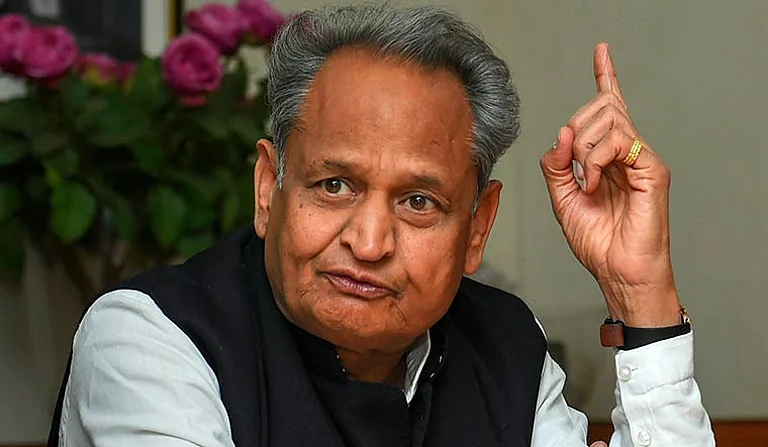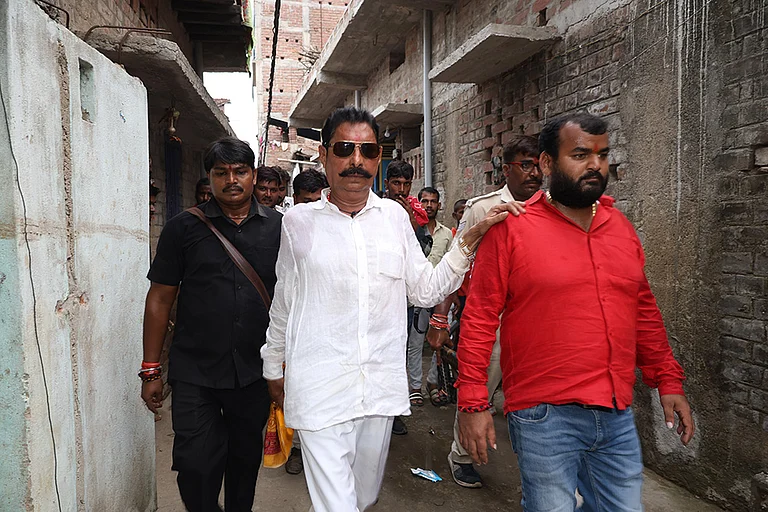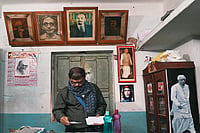
Mahto’s story reflects a structural truth about Bihar, where caste identity often redeems criminal notoriety and converts it into electoral capital.
His case is also a testament to how political actors across party lines leverage the influence that caste-based gangsters wield.
Mahto’s conflicts have long carried a caste dimension, with Bhumihars aligning with Akhilesh Singh and backward communities supporting Ashok Mahto.
Few figures embody the violent intersection of caste, crime, and politics in Bihar as starkly as Ashok Mahto, the feared gangster from Nalanda district whose life story mirrors the turbulent landscape of the state in the 1990s and 2000s.
He last made national headlines in 2024 when he announced that he was looking for a bride. After being convicted and barred from contesting elections, the 62-year-old Mahto married Anita Kumari, a pharmacist sixteen years younger than him.
The marriage reportedly came after RJD supremo Lalu Prasad Yadav promised to give his wife a party ticket. Anita contested the 2024 Lok Sabha elections from Munger, against sitting JD(U) MP Lalan Singh, and lost by a margin of about 80,000 votes.
This time around, Anita is contesting from the Warisaliganj Assembly seat against sitting BJP legislator Aruna Devi, the wife of another gangster and Mahto’s arch-rival Akhilesh Singh, an upper-caste strongman. The two gangsters have a long history of bitter political and violent rivalry in the Nawada region.
Hailing from the Kurmi caste, a dominant agrarian community in central Bihar, Mahto rose from humble beginnings in the village of Rampur, under the Asthawan police station area. His ascent from a local youth leader to one of Bihar’s most dreaded outlaws was shaped by deep-seated social hierarchies and the power struggle between upper and backward castes that defined the state’s political order.
Ashok Mahto first came to prominence in the late 1980s and early 1990s, when he formed what came to be known as the Ashok Mahto gang, composed mainly of Kurmi and Koeri youth who felt marginalised under the dominance of upper-caste landlords and their private militias.
His rise coincided with the decline of feudal power and the emergence of Lalu Prasad Yadav’s social justice politics, which sought to empower backward castes.
This changing political climate provided both space and tacit patronage for strongmen like Mahto, who claimed to fight caste oppression while simultaneously running networks of extortion, kidnapping, and murder across Nalanda, Nawada, and Sheikhpura districts.
The most defining chapter in his violent career was his long and bloody feud with Akhilesh Singh, an influential Rajput landlord and legislator who wielded enormous power in Nawada and adjoining areas. The rivalry between the two men — often described as a caste war between Kurmis and Rajputs — claimed dozens of lives and turned parts of central Bihar into virtual war zones. Police records attribute over 30 murders to Mahto’s gang, including political rivals, landlords, and suspected informers.
Among the most sensational episodes was the 2001 Nawada jailbreak, when Mahto and his close aide Pintu Mahtoescaped custody in a daring daylight operation, killing police personnel and freeing several associates.
Despite being branded a dreaded criminal by the state, Mahto also cultivated the image of a “Robin Hood” among sections of backward castes, who viewed him as a rebel challenging entrenched upper-caste domination. Over time, his notoriety transformed into political capital.
Over the years, Ashok Mahto’s name continued to loom large over the Barh, Nalanda, and Nawada constituencies — areas that remain critical to Bihar’s political arithmetic.
In November 2022, Netflix released the web series Khakee: The Bihar Chapter, inspired by the non-fiction crime book Bihar Diaries: The True Story of How Bihar's Most Dangerous Criminal Was Caught, written by IPS officer Amit Lodha in 2018. The series portrayed the cat-and-mouse battle between Lodha and Ashok Mahto, bringing the gangster’s story — and Bihar’s notorious political underworld — back into popular memory.


























